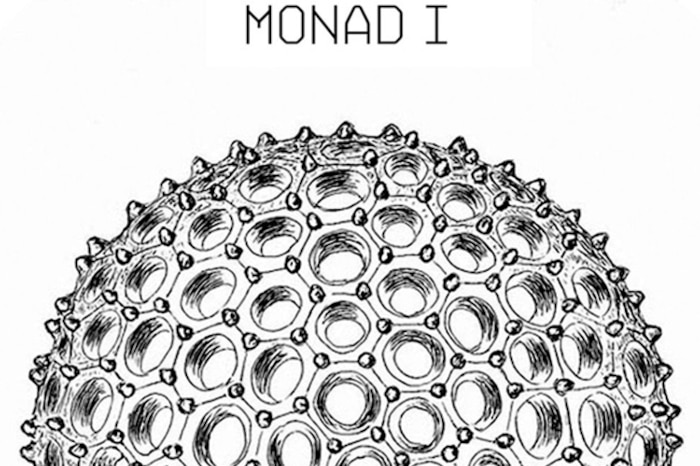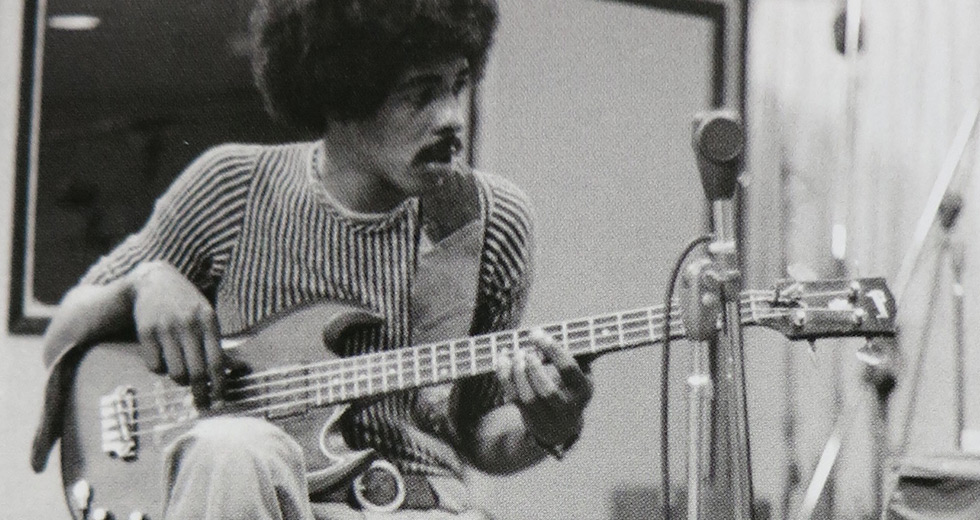Lucy: A Guide to Stroboscopic Artefacts
Italian techno authority and sound designer Lucy tells the story behind his Stroboscopic Artefacts label and its unique sonic outlook.

Luca Mortellaro, AKA Lucy, is a world traveling techno producer and ambient sound experimenter with his fingers in many creative pies. Born and bred in Italy, the published author, producer and sound designer relocated to Paris in 2005, pursuing a life in music and getting his first demo to tastemakers around the globe, including James Holden who eventually took notice of his exceptional skills.
With his musical interests leaning increasingly towards the fields of ambient sounds and the darker side of industrial and techno, Lucy moved to Berlin and founded the Stroboscopic Artefacts label, home to his first full album Wordplay for Working Bees. His reputation for deep explorations of the dance floor have made him a frequent guest at pretty much all major clubs and festival stages worth mentioning. Since then, his label has pushed a striking agenda that pairs club-ready tracks with sonically adventurous experiments. In this edited and condensed interview for RBMA Radio, Lucy guides us through a selection of tracks from the Stroboscopic Artefacts discography.
Lucy - Milgram Experiment
The topic of “Milgram Experiment” was violence and the evil inside us. It’s kind of a permanent topic that never left my life since I started critically thinking when I was 15 or so, when I starting reading a lot about philosophy and geopolitics. “Milgram Experiment” was an example of how evil is banal. But, for me, it’s much more complicated than this.
“Milgram Experiment” was after a particular experiment that was done in the US. I tried to translate into music the feeling that I had when reading about that experience, that very claustrophobic feeling. I often translate external stimuli into music and then process them so much that you can’t hear the original reference. But, in this case, I preferred to keep some original recordings from the actual experiment.
One of the most intriguing sentences which gets repeated during the track is, “I was losing my identity.” When the subject was given by the establishment the possibility of acting in a certain way – an evil way – the only justification they could give was that they didn’t know what happened. “I was feeling like I was losing my identity”… because they were kind of giving it up to a rule.
These dynamics are always around us. It’s just a matter of how they are hidden, or how much you are allowed to understand. Not just extreme censorship. Even the very subtle censorship, kinds of cultural filters. This is the kind of theme that I tried to translate feeling-wise and music-wise in the track.
Lucy - Follow the Leader
The ritual aspect of electronic music, and dance music in particular, is very important to me.
Titles, for me, are very important. A lot of artists who sign tracks on Stroboscopic will say, “Yeah, whatever, you choose.” For me, it doesn’t really work like this because words are very powerful. It’s the first introduction you give to your work, even before people listen to anything. You give them a landscape where they can move, and you’ve already given some borders.
An important aspect inside [the track] is the ritual aspect of electronic music, and dance music in particular, which is very important to me. I think music has always been connected to spirituality. If you think about old modern music – and I’m talking about even the classical modern music – it started as spiritual music. I don’t think this dynamic has ever changed. We’re still into ritual.
When you get lost in music, where you get into this kind of hole, it’s often a solipsistic individual experience. But they are so individual only because the mass and the crowd around you allowed you to have that personal experience. You would not act or feel the same if you were really alone in that dance floor.
Even if sometimes you think that it’s far away from where we’re living in the modern age, this ritual and spiritualistic approach to music is still very present. You can think about the performer figure as a modern shaman. Because when you are really into it, what you are doing is driving a huge amount of collective energy up and down, left and right, as you want. You are in charge, the crowd is giving you the responsibility and the task of moving these energies. At least that’s what we speak about one of those nights when the magic happens. The solipsism, the individuality and collectivity comes together in such a strong way in those ritual situations. That’s why rituals are so important in society as well, because it’s a necessary meeting point between the individual and the collectivity and where the two dynamics merge together.
Zeitgeber - These Rhythms
Zeitgeber is a project with Speedy J. It was a collaboration that was born by accident actually. It was not something we were really looking for. Speedy, Jochem, invited me for some sessions in his studio in Rotterdam. After the first day, we realized that it was not just playing around but that something bigger, more structured could come out. We approached production in a very “no borders” way. We were just jamming in the studio literally.
I think that “These Rhythms” is a pretty good example of what can happen when you are in a workspace that allows you to do that. When you have no kind of borders or responsibility, you don’t have to make people dance, you don’t have to please anyone. It’s not music to have a feedback or even to release something. At the beginning, we just worked on stuff and only when the project was finished did we start to think, “Now what do we do?”
Dadub - Transfer
The Dadub album was a very long process. I think even during the first year of the label we were already starting talking about a possible album. I saw the shapes of this album when Dadub was sending me stuff, but it was changing so many times that it’s … let’s say I started thinking that maybe that was not a bad thing. It was, all the time, gaining in richness. It was getting more and more multilayered.
“Transfer” was one of the tracks that they produced last. This one is featuring King Cannibal, who luckily had a studio just over Dadub’s studio, whose studio is over my own studio. It’s like ground floor, first floor, second floor. What came out was something so wild and powerful. There is such an amount of energy in that track. It’s something I could listen to in so many different contexts, which is something very rare I think.
Xhin - Teeth
Xhin produced Sword during the last phases of my own first album production. At that time, the things were very connected. In the early days of Stroboscopic everything was family. Xhin was one of the first to release on the label, so the connection was very, very strong in that time human-wise and artistic-wise. This was a very different process than the Dadub one. I was not following the many steps. Xhin was more like, “I do my thing. When it’s finished, listen to it.” The modification discussions were very little after, and I think this is something you can actually feel in the album. It’s a very bold album. It’s a dialogue with himself.
Lakker - Valentina Lane
“Valentina Lane” is a track that, without a beat, could be an amazing flowing piece. It’s very evoking, romantic even. I would even say it has a pop side in the harmonics. At the same time there is a pretty strong beat, but completely broken. It goes off tempo very often. That’s what I really look for… When an artist manages to play around with the grid of what you perceive as dance music. It’s something I want to dance to or it’s something I’m going to listen to at home.
I like when artists play with this kind of – to borrow a word from Jung – archetypes in music. It’s not a fixed concept or something you can express very clearly, but like a whole ensemble of elements that you make recognize something as that something you were recognizing. To me, the interesting artists are those who can manage to take the archetypes and then play with them, deform them.
Kangding Ray - Oise
To me, the interesting artists are those who can manage to take the archetypes and then play with them, deform them.
This is an example where the label learned from the artist and vice versa. Before his Monad release Kangding Ray dedicated himself to something completely other than dance music. Then, probably, he found it interesting to feature in this series to challenge himself. Because – even in a deformed way – the Monad series is, in my own perception, strongly dedicated to club output. “Oise,” in particular, is very Kangding Ray-sounding, but at the same time kind of meets the label aesthetic. It’s when magic happens for a label, wherein everything makes sense inside the label and everything makes sense for the artist.

Chevel - Fulcron
This track was from the very first Monad release, where nothing was really settled. Chevel was a very young artist. At that time I think he was 20. The music he was making was so wild and uncompromising that I was like, “Yeah, I want to release this, but it’s not really what I’m doing on the vinyl series, our main series, so where can I put this?”
Give me this delicate and wild and extreme flower, I will bring it as it is to a wider audience and let’s see what happens.
So we chose four tracks: Two of them were very much straightforward stuff, one was more broken beat and another was much more drone-y and experimental. At that time those were the three main aspects to my perception of what was happening in techno – or maybe what was about to happen in my opinion.Even if the artist has no idea about these dynamics, that’s the beauty of it. This unawareness probably makes the final product even stronger. It’s my role as a label. “Give me this delicate and wild and extreme flower, I will bring it as it is to a wider audience and let’s see what happens.”
Rrose - The Stare
This is, for me, one of the most amazing examples of the psychoacoustic power of techno. I have used this track both in very peek time moments of my DJ sets, but also during meditation sessions I have had on my own or in groups. I think Rrose is really in a spectacular moment of his musical career. We had a crazy feedback about this release. Both in the personal side, like my own very individual feedback when I first heard the tracks. And then what I saw happening when we brought this to our public. It’s such an extreme approach to electronic music. It reminds me, in approach, of Plastikman back in the early ’90s.

Plaster - Seber / James Ruskin - Cast Down
The Stellate series was a very special output from Stroboscopic. We always kept space for a very leftfield approach to techno on Stroboscopic. Instead of being about the finished painting, the Stellate series was dedicated to the palate of colors. These two tracks represent very extreme examples of it in two very different senses. “Seber” from Plaster is very defined and detailed. And James Ruskin’s “Cast Down” is very basic and simple. There is no virtuosity of technique. It’s all about the mood. It’s more like the raga in Indian music. It’s about the color instead of the actual music. I think I picked up these two extreme points to give a kind of summing panorama of what the series represented.
This feature is part of a week of material guest curated by Stroboscopic Artefacts’ Lucy. To check out more features, check out our guest curator hub page.

